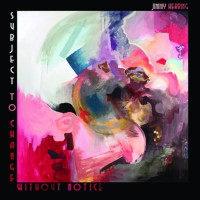Widespread Panic Guitarist Explores Backwards Reverb and the EBow
On getting in the right mindset to record: “The studio can be a somewhat clinical atmosphere. Sometimes it’s difficult to get loose.”
 Jimmy Herring
Jimmy Herring
Subject To Change Without Notice
Primary Studio: John Keane Studios
Additional Studios: Rush Hour Studio, Flying Whale Recording, Tank Studio, Winsome Farm Studio
Record Label: Abstract Logix
Release Date: August 21, 2012
Producer: John Keane
Engineers: John Keane at John Keane Studios; Rush Anderson at Rush Hour Studio
Artwork: Cameron Herring
Mastering: Glenn Schick at Glenn Schick Mastering
PRE-PRODUCTION
What was your pre-production like on this project?
Minimal. I [just] hung out with John Keane for a couple of hours discussing the music.
How did you choose the studio(s)?
I had worked with John Keane in the past and couldn’t wait to record with him again. We did some of the overdubs at Rush Anderson’s place. I like the way they approach recording.
PRODUCTION
What kind of sound were you looking for and how did you achieve it?
I was looking to capture the [pure] sound of my amps. Both John and Rush helped me get the sound I was looking for. They would move the mics around until we liked the sound, which didn’t take long.
How will this record compare to your work with Widespread Panic and the Dead?
To start with it’s instrumental music…and I sometimes need to fill the spot where the singer normally would be. Also, some of this music may have stronger leanings toward jazz.
Did you use any special gear or recording techniques on this one?
Yes, John Keane introduced me to a device called an EBow. I’ve heard them in other people’s music but never used one myself until now. We used it to create the drone in “Within You Without You.” Also, John turned some of my guitar tracks around backwards. He also used backwards reverb on a couple of things.
What was your philosophy on live, full-band takes versus individual tracking?
I like to record live in the studio, and if you get a great take of everybody then you have something special. But more often than not, you get a great drum track and rebuild the other tracks as needed. I don’t feel ashamed if I have to fix a rhythm track or redo a solo when I’m in the studio. It’s not a gig. It’s a completely different animal!

Any special guests?
Yes…Bill Evans, Bela Fleck, Tyler Greenwell, John Keane, Nicky Sanders, Ike Stubblefield, Carter Herring.
What did you try to accomplish in the studio that you’re not able to do live?
In a word…orchestration. Some of the things I wanted to do would require a 6-piece band, sometimes more. In the studio you can have special guests or guitar overdubs to get that point across, plus you can zero in on the details a little easier.
What were the toughest challenges you faced?
To get to that state of mind where you aren’t thinking. The studio can be a somewhat clinical atmosphere. Sometimes it’s difficult to get loose.
POST-PRODUCTION
How did you handle final mixing and mastering?
For the mix I was just a fly on the wall. I waited until John Keane asked me what I thought before I said anything. He’s a great mixer and he just did his thing. We think similarly so I didn’t say much, but I was present for most of the mixing. As for mastering, I left that in the capable hands of John and the mastering engineer, Glenn Schick.
What are your release plans?
This album is going to be released in Japan, Europe and America simultaneously, followed by an American tour, which will encompass all the major markets along with a co-bill tour of the East Coast with Victor Wooten in November. An extensive publicity and radio campaign is planned for the album release and tour.
KEY GEAR:
Guitars
-Fender American Standard Stratocaster w/ Lollar Imperial Humbuckers
-’62 Fender RI Telecaster Custom w/ Lollar pickups
-Fender Japanese RI Telecaster w/ Lollar pickups
-1969 Fender Stratocaster w/ Lollar pickups
-Fender Japanese RI Telecaster with Seymour Duncan pickups
-PRS McCarty Hollow body
-PRS 5-13 Rosewood
-Jerry Jones Single Cut Baritone
-Baxendale Custom Acoustic
Amps
-1964 Fender Super Reverb
-1966 Fender Pro Reverb
-Vox AC-15
-Fuchs ODS 100
Speaker Cabs
-Tone Tubby Open Back 4×12 cab (w/ Alnicos)
-Mojo Tone 4×10 w/ Tone Tubby Alnicos
-Mojo Tone 4×10 w/ WGS alnicos
Pedals
-Hughes & Kettner Tube Factor,
-Ernie Ball Volume Pedal
Mics
-Shure SM7
-Shure SM57
-Sennheiser 409
photo by Jason Thrasher
